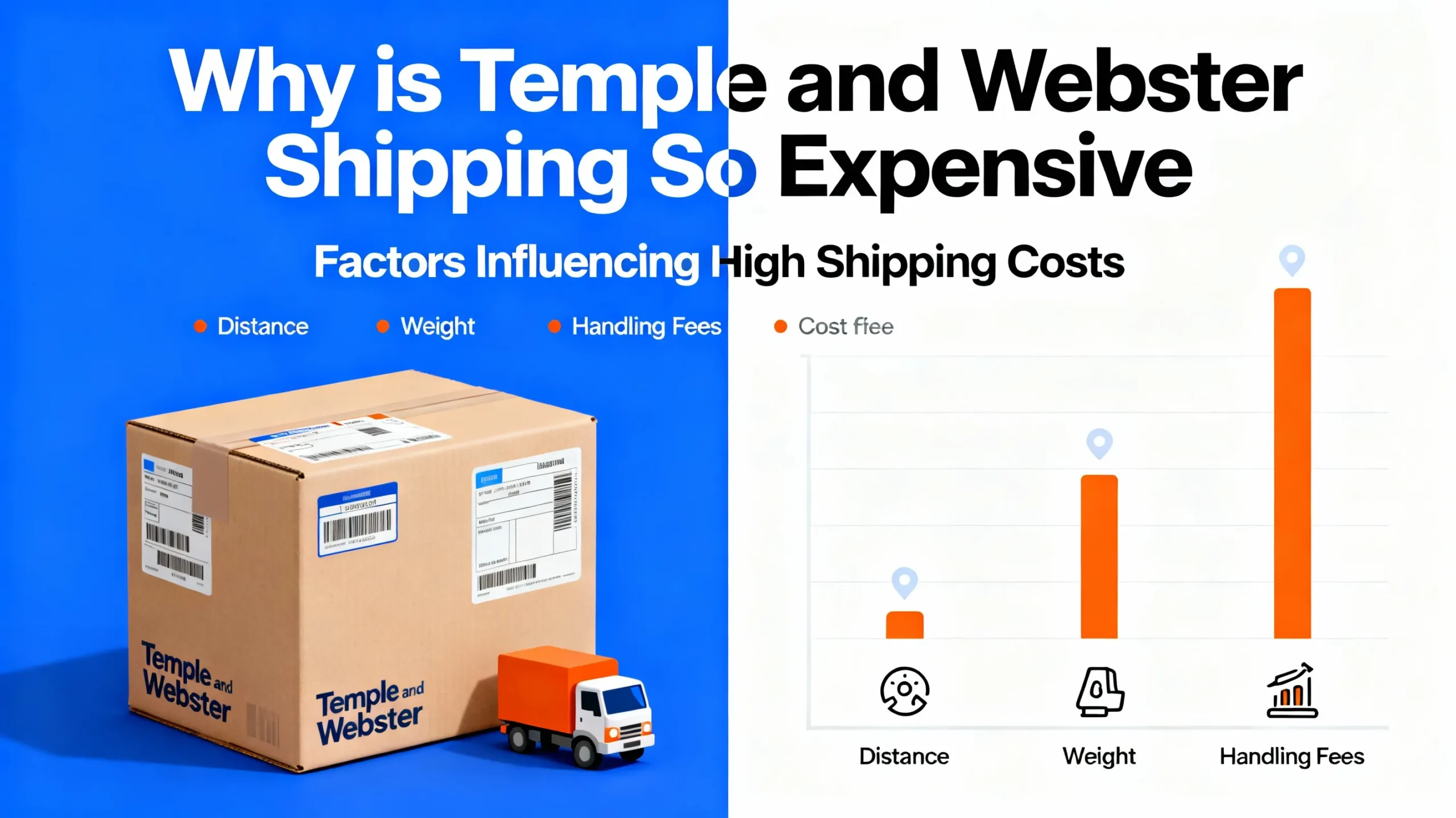Temple and Webster has become the preferred online store among most Australian furniture admirers seeking affordable homewares with a modern design. It offers thousands of sofas, beds, dining tables and rugs at prices of up to 30-60 lower than traditional retailers, and one can easily fall in love with an item only to be shocked to find a huge bill on the checkout desk: the shipping costs of up to 99, 199 or even 399 to deliver one item. Soon that bargain does not seem so cheap.
Why then is Temple and Webster such an expensive shipment? The brief explanation: hefty furniture, third-party vendors, local delivery issues and visible (not secret) cost models. The five key reasons Temple and Webster shipping fees will not go down in 2025 are broken down below.
1. Furniture Is Genuinely Expensive to Move (The Bulky Goods Reality)
Unlike fashion or electronics, almost everything Temple & Webster sells is classified as “bulky” or “oversized”. A three-seater sofa can weigh 70–120 kg and measure 2.4 m × 1 m × 1 m. Moving these items requires:
- Specialised two-person delivery teams
- Trucks with tail-lifts or hydraulic gates
- Protective blanketing and corner guards
- Extra insurance (a $3,000 sofa is not shipped the same way as a $30 cushion)
Industry data shows delivering a single bulky item inside the home (not just curbside) costs Australian carriers $120–$350 on average in metro areas. Temple & Webster shipping fees largely reflect these real-world costs rather than arbitrary mark-ups.
2. 87% of Products Are Sold by Third-Party Partners
Temple & Webster have a hybrid marketplace model. Though the company keeps a number of items in its own warehouses in Sydney and Melbourne, most products (formally 87% in their 2024-2025 reports) are drop-shipped directly by independent suppliers and manufactures throughout Australia-wide and internationally.
Temple and Webster have their individual supplier contribution to shipping. In the case where you purchase a bed in Queensland and have it delivered in Perth, then the logistics chain is highly complicated and costly. Temple and Webster combines these different costs and offers one initial price as opposed to shocking consumers into paying a range of fees charged by different vendors (the manner in which eBay or Etsy does at times). Also check our guide on Diana Ferrari Outlet Store.
3. No “Free Shipping” Subsidy Trick
Most of the online stores offer free delivery by merely charging the shipping fees into the product. The opposite strategy is taken by Temple and Webster: they have decided to maintain base prices as low as possible and collect actual delivery in addition.
This transparency implies that the Temple and Webster shipping look costly upon the checkout, but the overall landed cost (item plus delivery) is frequently still lower than the same product purchased at Freedom, Fantastic Furniture or Nick Scali and their so-called free metro delivery (which is not free after reverse-engineering their overcharged RRP).
4. Regional and Remote Area Premiums Are Brutal
Australia is enormous and sparsely populated. Once you leave capital cities, delivery costs skyrocket:
- Regional Queensland, WA and Tasmania often add $100–$300
- Remote mining towns or islands can trigger $500+ surcharges
- Elevator vs stairs, narrow driveways and apartment buildings without loading docks all attract legitimate extra fees
Temple & Webster uses Australia Post’s and Allied Express’s official postcode surcharge tables. These are the same rates charged to every furniture retailer, but because Temple & Webster shows the fee upfront (rather than absorbing or hiding it), customers feel the sting more acutely. Also check our guide on The Commissariat Store Museum Brisbane.
5. Rising Carrier Costs in 2024–2025
Fuel prices, driver shortages and new Heavy Vehicle National Law compliance have driven courier rates up 18–28% since 2023. At the same time, customer expectations have shifted toward “white glove” delivery (inside the home, packaging removed, sometimes assembly). Temple & Webster shipping fees have risen accordingly to avoid operating deliveries at a loss.
How to Make Temple & Webster Shipping Less Painful
Despite the headlines, there are proven ways to reduce or eliminate the sting:
- Shop the “Free Metro Delivery” category (updated weekly)
- Use Click & Collect from one of their 800+ partner locations (completely free)
- Wait for seasonal sales — Temple & Webster regularly offers $50–$100 delivery credits
- Bundle multiple items — shipping two or three pieces often costs only slightly more than one
- Join Temple & Webster’s “Extra” loyalty program ($49/year) for permanent $50 delivery vouchers
The Bottom Line
Yes, Temple and Webster shipping may apsear to be costly on its own, but this is a real representation of the real cost of transporting heavy and delicate furniture in one of the largest and least populous countries in the world. Temple and Webster actually save hundreds of dollars after the delivery fee than the traditional stores by refusing to overcharge product prices to subsidise free shipping.
The next time you see a delivery charge of $149, you will remember that you are buying the service of a 100 kg marble dining table being delivered up three flights of stairs in Adelaide, not a T-shirt in China. There is very little in the Australian furniture industry whereby the low product price and the low shipping is genuine.
